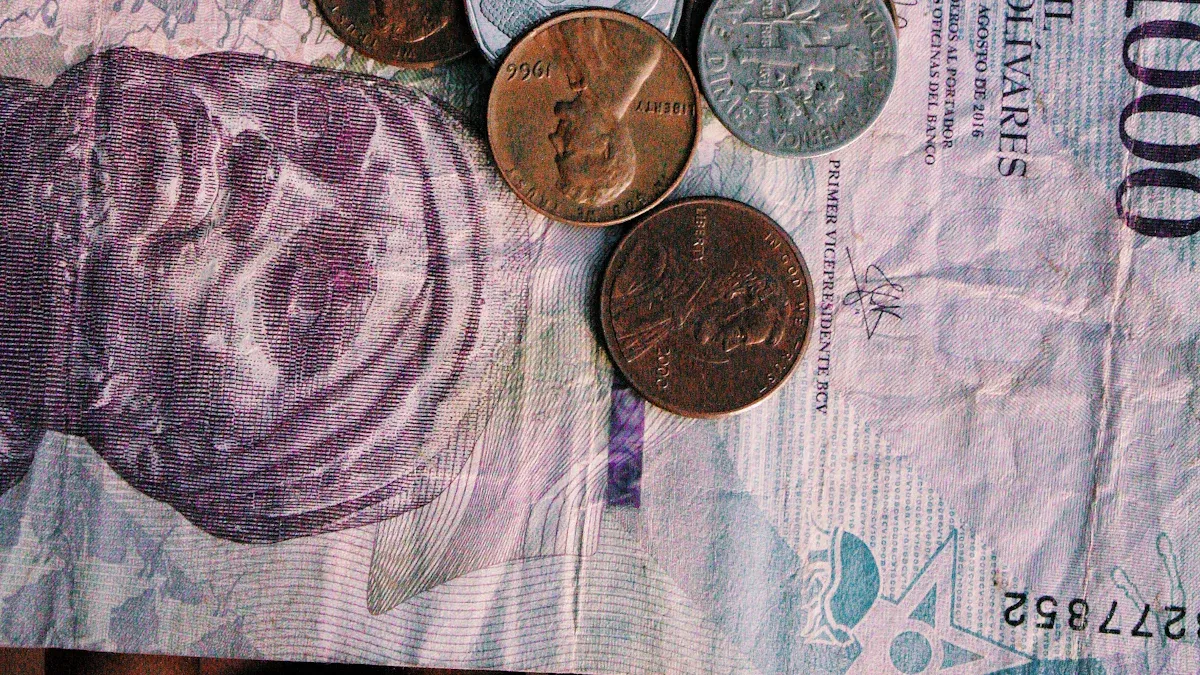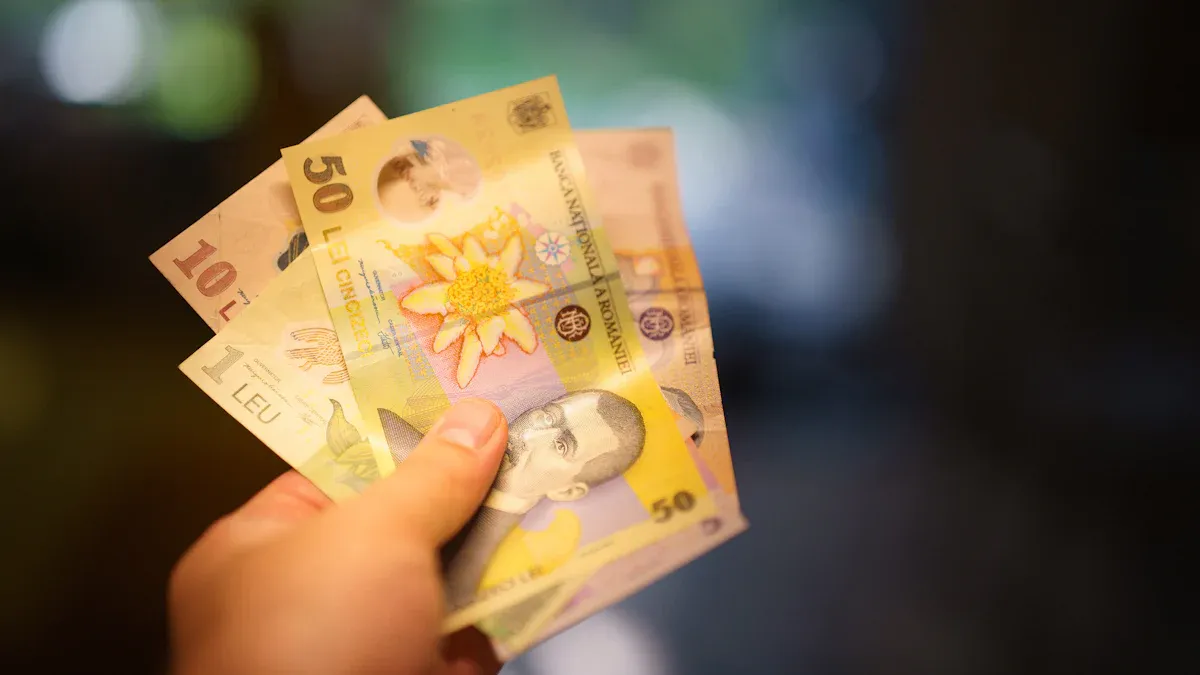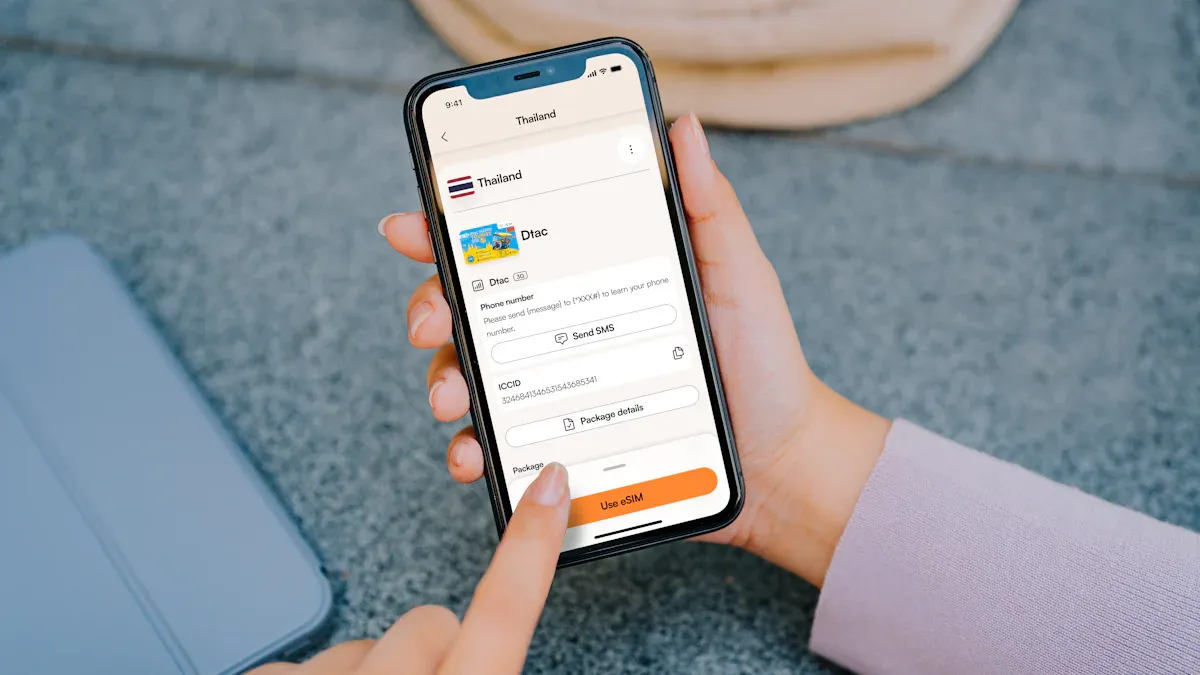- EasyCard
- Trade
- Help
- Announcement
- Academy
- SWIFT Code
- Iban Number
- Referral
- Customer Service
- Blog
- Creator
Guide to Colombian Currency and Remittance: Peso, Exchange Rate, and Payment Methods

Image Source: pexels
Are you planning to travel to Colombia? The official Colombian currency is the Colombian Peso (COP). Understanding it is crucial because approximately 8 out of every 10 daily transactions in Colombia are still completed with cash. This guide will provide you with clear and practical financial advice to ensure your financial activities in Colombia go smoothly.
Key Points
- Colombia’s official currency is the Peso (COP), and cash is widely used for daily transactions.
- Using ATMs typically offers the best exchange rates, but be mindful of fees.
- In large cities, bank cards are commonly accepted, but cash is necessary for small purchases and rural areas.
- For international remittances, online services are generally cheaper and faster than traditional banks.
- When traveling, carrying a small amount of cash and a bank card is the best payment combination.
Colombian Currency: Peso (COP) Introduction

Image Source: pexels
Before starting your exploration in Colombia, familiarizing yourself with the local currency is the first step. The Bank of the Republic of Colombia (Banco de la República) is the country’s sole issuer of currency.
Currency Symbol and Denominations
The official ISO code for the Colombian Peso is COP. Locally, you’ll often see the dollar sign $ on price tags, which can be confusing. Remember that in Colombia, $ typically refers to the Peso. Sometimes, it’s written as cop to distinguish it.
| Denomination (Peso) | Main Figure/Theme | Design Elements |
|---|---|---|
| 100,000 | Carlos Lleras Restrepo | Cocora Valley, wax palm trees, Barranquero bird |
| 50,000 | Gabriel García Márquez | Lost City, hummingbird, Burgao snail |
| 20,000 | Alfonso López Michelsen | La Mojana canal, sombrero vueltiao hat |
| 10,000 | Virginia Gutiérrez | Amazon region, Victoria regia water lily, tree frog |
| 5,000 | José Asunción Silva | Colombian highland meadows, puya plant, bee |
| 2,000 | Débora Arango | Caño Cristales river, Las monjas y el cardenal painting |
Coin denominations include 50, 100, 200, 500, and 1,000 pesos, ideal for small fees and transportation costs.
Banknote Authenticity Verification
When receiving cash, taking a few seconds to verify its authenticity is a wise move. For example, with the 20,000 Peso banknote, you can check using these simple steps:
- Feel the Texture: Genuine notes have a distinct raised texture on portraits and text.
- Check the Watermark: Hold the note up to light to see Alfonso López Michelsen’s portrait and the number “20” watermark.
- Tilt for Color Shift: Tilt the note; the anón fruit pattern on the front changes from green to blue.
- Inspect the Security Thread: The security thread shifts from green to purple when moved and displays the text “BRC”.
Practical Tip: When receiving large denomination notes, adopt the “look, feel, lift, tilt” habit. This simple process helps you quickly identify most counterfeit notes.
Tips for Using Large Denomination Notes
While the 100,000 Peso is the largest denomination, it’s not very convenient for daily transactions. When using 50,000 or 100,000 Peso notes at small shops, taxis, or bars, merchants may not have enough change. These venues are also where counterfeit notes (especially 20,000 and 50,000 denominations) are more common.
To avoid hassle, the best strategy is to break large notes into smaller denominations (20,000 pesos or below) and coins at large supermarkets or banks. For daily outings, ensure your wallet has enough small change to make payments smoother.
Exchange Rate Inquiry and Currency Exchange
Mastering how to exchange currency at the most favorable rates can save you significant costs. Colombia uses a “managed floating exchange rate system,” meaning rates fluctuate daily. Therefore, checking real-time exchange rates before exchanging is crucial.
Real-Time Exchange Rate Inquiry Channels
To get the most accurate exchange rate information, you can rely on the following channels:
- Authoritative Financial Websites: Sites like Reuters and Bloomberg provide professional and reliable data.
- Bank Websites: Local Colombian banks or your issuing bank’s website publish daily official exchange rates.
- Professional Exchange Rate Apps: Apps and websites like XE are highly practical, offering real-time rates and comparisons of different remittance services.
When using tools like XE, you’ll find they often provide more favorable exchange rates and lower fees than traditional banks. Before confirming a transfer, they clearly list all fees, ensuring full transparency. To secure the best deal, compare exchange rates and fees side-by-side across different providers before transferring.
Comparison of Best Exchange Locations
Where you exchange currency in Colombia directly affects the amount of pesos you receive. Exchange rates in large cities are typically more attractive than in smaller areas. Here’s a comparison of different exchange locations:
| Exchange Location | Pros | Cons | Recommendation Rating |
|---|---|---|---|
| ATM | Best exchange rates, typically using mid-market rates. | May incur withdrawal fees (average ~$3.5 USD). | ⭐⭐⭐⭐⭐ |
| Exchange Office (Casa de Cambio) | Convenient and easy to find in urban areas. | Rates are generally less favorable than ATMs. | ⭐⭐⭐ |
| Bank | Safe and reliable. | Average rates, and many banks don’t exchange cash for non-customers. | ⭐⭐ |
| Airport/Hotel | Extremely convenient for emergencies. | Worst rates and high fees. | ⭐ |
Best Practice: Prioritize ATMs In most cases, withdrawing pesos directly from ATMs offers the best exchange rates. While local banks charge a fee, the total cost, even with potential home bank fees, is usually lower than exchanging at exchange offices or airports. To maximize savings, use travel-friendly bank cards like N26 or Revolut, which are optimized for overseas withdrawals.
Currency Exchange Precautions
When exchanging currency, prioritize safety and compliance.
- Comply with Legal Regulations: Colombian law requires all foreign exchange transactions to go through official channels like banks or authorized exchange offices. Additionally, the maximum cash limit for entering or leaving the country is $10,000 USD or its equivalent in other currencies. Amounts exceeding this must be declared.
- Avoid Street Exchanges: You may encounter people on the street offering to exchange money. Always refuse these offers. Street exchanges lack transparency and carry a high risk of receiving counterfeit notes or being robbed.
Safety Tips
- Beware of “Helpful” Strangers: At ATMs or exchange offices, if someone is overly eager to “assist” you, stay vigilant and politely decline.
- Negotiate Prices in Advance: When shopping with street vendors or taking taxis, confirm the final price upfront to avoid overcharges due to language barriers or intentional fraud.
- Familiarize Yourself with Banknotes: Review the banknote features mentioned earlier. Knowing the colors and sizes of different denominations helps prevent receiving incorrect change or counterfeit notes.
By following these simple guidelines, you can safely and efficiently complete currency exchanges, laying a solid financial foundation for your Colombian trip.
Colombian Payment Methods

Image Source: unsplash
Understanding Colombia’s mainstream payment methods can make your spending experience smoother. While bank cards and digital payments are increasingly popular, cash remains indispensable in daily life. A smart strategy is to combine multiple payment methods to handle different scenarios.
Cash Payment Scenarios
In Colombia, cash is still king, especially in certain situations. You cannot rely entirely on digital payments, as cash is the only accepted payment method in many places. Always keep some peso cash on hand.
Here are the scenarios where you’re most likely to need cash:
- Small Purchases: Buying snacks, drinks, or tipping is most convenient with cash.
- Public Transportation: Local buses or taxis typically require cash payments.
- Markets and Small Vendors: Local markets, street stalls, or family-run shops mostly accept only cash.
- Rural and Remote Areas: Outside major cities, in rural or remote areas, cash is often the only payment option.
Practical Advice For daily outings, carry small-denomination notes, such as 2,000, 5,000, and 10,000 pesos. Many small merchants may not have change for 50,000 or 100,000 peso notes, so having small change avoids unnecessary hassle.
Bank Card Usage Guide
In Colombia’s major cities, international bank cards are widely accepted. You can confidently use them at hotels, large shopping centers, and chain restaurants.
- Visa and Mastercard: These cards have the highest acceptance. From Bogotá to Medellín, nearly all card-accepting merchants, including supermarkets, museums, Uber, and clinics, accept them.
- American Express: Acceptance is more limited. You can use it at high-end hotels (e.g., Hilton, Marriott), international brand stores, and upscale restaurants, but it’s often not accepted at small businesses, local pharmacies, or casual cafés.
Pre-Trip Preparation Before departing, notify your issuing bank of your travel plans. Inform them you’ll be using your card in Colombia. This simple step prevents the bank’s fraud system from flagging your overseas transactions as suspicious, avoiding card freezes.
Introduction to Local Digital Wallets
In recent years, digital wallets have surged in Colombia, becoming a preferred payment method for locals. Nequi and DaviPlata dominate the market.
| Digital Wallet | User Base |
|---|---|
| Nequi | Over 24 million |
| DaviPlata | 19 million |
| MOVii | 4 million |
While these digital wallets are popular, they primarily serve residents with a local ID (Cédula de Ciudadanía) and phone number. For short-term travelers, registering and using these apps can be challenging. Therefore, rely on cash and international bank cards as your primary payment methods.
Cross-Border Remittance Guide
Whether you need to receive living expenses or plan to send funds out of Colombia, understanding cross-border remittance rules is essential. Choosing the right service saves fees and ensures funds arrive safely and quickly.
Sending Money to Colombia
When transferring funds to Colombia, online remittance services are typically faster and more cost-effective than traditional bank wire transfers. Remitly and Western Union are two common choices.
| Service Provider | Fees | Transfer Speed | Exchange Rate |
|---|---|---|---|
| Remitly | Displayed upfront, lower for economy options. | Economy: 3-5 business days; Express: minutes. | Includes rate markup. |
| Western Union | Displayed upfront, sometimes with promotions. | Minutes to 2 business days. | Includes rate markup. |
If transferring to a local bank account like Bancolombia, the recipient needs to prepare in advance. Bank wire transfers typically take 2-5 business days to arrive.
Important Note: Enabling Receipt and Taxes
- Enabling Receipt: To receive international transfers, recipients must submit an “Abono Automático” form to banks like Bancolombia to activate automatic deposit services.
- Tax Information: Colombia imposes a “4x1000” tax (0.4%) on bank withdrawals. However, if funds are deposited into a savings account, amounts below a specific threshold (approximately $16,472,750 pesos in 2024) are tax-exempt.
Sending Money from Colombia
When sending money abroad from Colombia, you can choose between traditional banks and fintech companies. Fintech platforms typically offer better fees and speed, especially for small to medium daily payments.
| Remittance Channel | Transaction Fees | Settlement Speed |
|---|---|---|
| Traditional Banks | ~$25–$50 USD per wire transfer | 1–5 business days |
| Fintech Companies | ~$0–$5 USD per transaction | Same day or instant |
For large or complex transactions, traditional banks remain reliable. For most daily remittance needs, fintech companies offer more efficient and economical solutions.
Documents Required for International Remittances
For international remittances, you need to provide documents to verify your identity and address. Prepare the following in advance:
- Identity Proof:
- Valid passport or Colombian ID (Cédula).
- Address Proof:
Having these documents ready ensures a smooth remittance process without unnecessary delays.
Planning your Colombian currency strategy in advance is key to a smooth trip. The smart approach is to combine multiple payment methods.
Best Practice Opt for a “cash + bank card” combination to flexibly handle various spending scenarios from urban to rural areas.
Always use official channels like banks or ATMs for currency exchange and remittances, and stay vigilant to safeguard your belongings. Wishing you a financially smooth and enjoyable experience in Colombia.
FAQ
Is tipping necessary in Colombia?
At restaurants, a 10% service fee (propina voluntaria) may be included in the bill, which you can choose to pay. For tour guides or hotel staff, giving a small cash tip is a nice way to show appreciation.
Are there extra fees for using a card in Colombia?
Your issuing bank may charge a fee for each overseas transaction. Some local merchants may also add a small surcharge for card payments. Check with your bank about fees before traveling.
Can I pay directly with U.S. dollars?
Some tourist-area hotels may accept USD, but the exchange rate is usually poor. Elsewhere, dollars are generally not accepted. To get the best value and avoid hassle, always pay in Colombian Pesos (COP).
Best Practice Always use the local currency for the fairest prices.
How much cash should I carry daily?
Carry the equivalent of $30 to $50 USD in pesos. This is sufficient for transportation, snacks, and non-card transactions. In cities, rely more on bank cards, withdrawing from ATMs as needed.
*This article is provided for general information purposes and does not constitute legal, tax or other professional advice from BiyaPay or its subsidiaries and its affiliates, and it is not intended as a substitute for obtaining advice from a financial advisor or any other professional.
We make no representations, warranties or warranties, express or implied, as to the accuracy, completeness or timeliness of the contents of this publication.




Contact Us
Company and Team
BiyaPay Products
Customer Services
is a broker-dealer registered with the U.S. Securities and Exchange Commission (SEC) (No.: 802-127417), member of the Financial Industry Regulatory Authority (FINRA) (CRD: 325027), member of the Securities Investor Protection Corporation (SIPC), and regulated by FINRA and SEC.
registered with the US Financial Crimes Enforcement Network (FinCEN), as a Money Services Business (MSB), registration number: 31000218637349, and regulated by FinCEN.
registered as Financial Service Provider (FSP number: FSP1007221) in New Zealand, and is a member of the Financial Dispute Resolution Scheme, a New Zealand independent dispute resolution service provider.




















